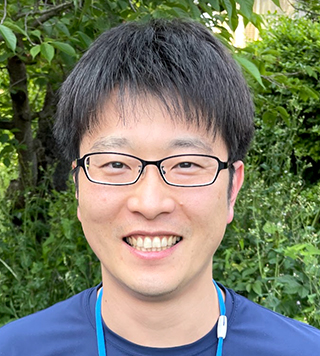Video ProfilesResearch
January 2024 Issue
Condensed matter physics: Materials science at ultra-high 1000 T magnetic fields
Akihiko Ikeda
Assistant Professor, Department of Engineering Science
Akihiko Ikeda introduces his research on condensed matter physics, particularly the effects of high magnetic fields up to 1000 Tesla on materials. Under these extreme magnetic conditions, changes occur not only in electron spin but also in the electronic, phononic, optical, and lattice states. Ikeda’s primary goal is to observe material phase transitions leading to entirely new crystal structures unique to very high magnetic fields.
The realm of very high magnetic fields remains largely unexplored due to experimental and theoretical challenges. Ikeda describes an experimental technique known as a destructive pulse magnet, utilizing electromagnetic flux compression. The process involves compressing the electromagnetic field to achieve magnetic fields ranging from a few hundred to a thousand Tesla. However, after field generation, the coil is consistently damaged, illustrating the difficulties in this pioneering work.
To delve into such exotic high magnetic fields, new techniques for material science need development. Ikeda describes his development of a strain gauge using an optical fiber called fiber Bragg grating, enabling magnetostriction measurements up to a thousand Tesla. “This technique revealed a new phase of matter in the perovskite-structured cobaltite LaCoO3,” says Ikeda. “We expect to uncover more material properties in the 1000 Tesla region.”
At the University of Electro-Communications (UEC), Ikeda has created a portable 100 Tesla generator named PINK to explore the microscopic properties of materials at such high magnetic fields. The experimental process involves exploding the coil, generating 77 Tesla at SACLA, the x-ray free electron laser (XFEL) facility in Japan. The XFEL pulse is synchronized with the highest magnetic field generation, enabling X-ray diffraction measurements at 77 Tesla. The second generation of PINK is currently under development, aiming to conduct X-ray measurements above 100 Tesla in the near future.
“The exploration of 1000 Tesla magnetic fields extends beyond material science, encompassing a broader range of scientific disciplines such as molecular science, biology, plasma physics, and fundamental sciences like particle physics,” explains Ikeda. “I welcome newcomers and encourage further collaborations both within and outside the UEC, on this entirely new frontier of science.”
References and further information


1. Spin state ordering of strongly correlating LaCoO3 induced at ultrahigh magnetic fields
A. Ikeda, T. Nomura, Y. H. Matsuda, A. Matsuo, K. Kindo, K. Sato
Phys. Rev. B 93, 220401(R) (2016)
DOI:https://doi.org/10.1103/PhysRevB.93.220401
2. High-speed 100 MHz strain monitor using fiber Bragg grating and optical filter for magnetostriction measurements under ultrahigh magnetic fields
A. Ikeda, T. Nomura, Y. H. Matsuda, S. Tani, Y. Kobayashi, H. Watanabe, K. Sato
Rev. Sci. Instrum. 88, 083906 (2017).
DOI: https://doi.org/10.1063/1.4999452
3. Record indoor magnetic field of 1200 T generated by electromagnetic flux-compression
D. Nakamura, A. Ikeda, H. Sawabe, Y. H. Matsuda, and S. Takeyama
Rev. Sci. Instrum. 89, 095106 (2018)
DOI:
https://doi.org/10.1063/1.5044557
4. Two spin-state crystallizations in LaCoO3
A. Ikeda, Y. H. Matsuda, K. Sato
Phys. Rev. Lett. 125.177202 (2020).
DOI:
https://doi.org/10.1103/PhysRevLett.125.177202
5. Generating 77 T using a portable pulse magnet for single-shot quantum beam experiments
A. Ikeda, Y. H. Matsuda, X. Zhou, S. Peng, Y. Ishii, T. Yajima, Y. Kubota, I. Inoue, Y. Inubishi, K. Tono, M. Yabashi
Appl. Phys. Lett., 120, 142403 (2022)
DOI:
https://doi.org/10.1063/5.0088134
6. Signature of spin-triplet exciton condensations in LaCoO3 at ultrahigh magnetic fields up to 600 T
A. Ikeda, Y. H. Matsuda, K. Sato, Y. Ishii, H. Sawabe, D. Nakamura, S. Takeyama, J. Nasu
Nat. Commun. 14, 1744 (2023).
DOI:
https://doi.org/10.1038/s41467-023-37125-4


